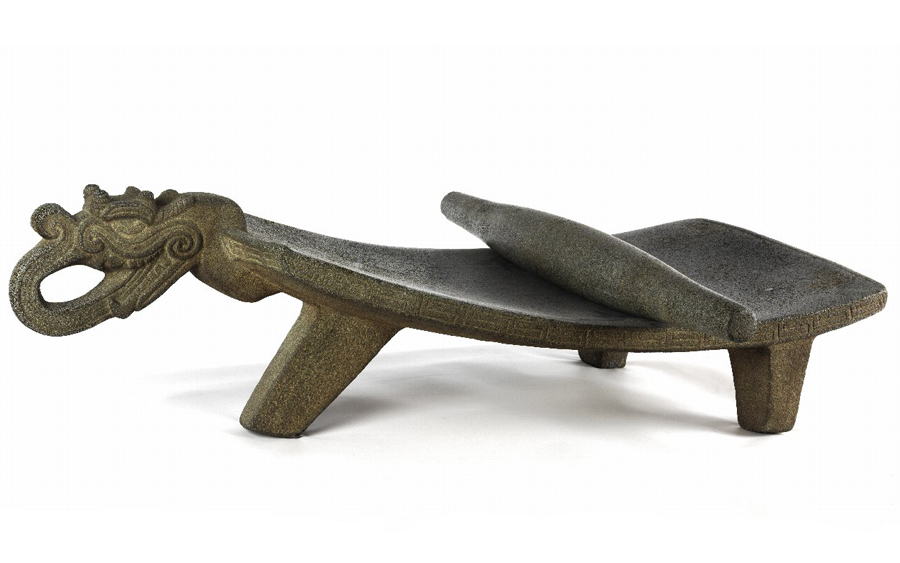Mexico & Central America
Experience the vibrant heritage and diverse cultures of the ancient Americas.
Main Level
Included with Museum Admission
Above: Figure of Dancing Man, Mexico, 300-800 CE, 61-1-2

Experience the vibrant heritage and diverse cultures of the ancient Americas.
Main Level
Included with Museum Admission
Above: Figure of Dancing Man, Mexico, 300-800 CE, 61-1-2

For thousands of years, a variety of distinctive yet interconnected cultures thrived in what is known today as Mexico and Central America. These cultures left behind a legacy of richly carved monuments and elaborate architecture.
Above: Figure of Dancing Man, Mexico, 300-800 CE, 61-1-2
Discover key intellectual developments in this region, including the origins of urbanism, political hierarchies, organized religions, and writing. Divided into seven regional and cultural sections, it stretches geographically from Mexico to the isthmus of Panama. With four towering Maya monuments—the most in any U.S. museum—come face to face with divine kings while learning about the representations of ballgame equipment from the Gulf Coast as the oldest sport in the world. See powerful Aztec sculptures as testaments to a once-great empire, while Olmec pieces made 2,000 years earlier reflect the beginning of a religious revolution that deified maize. Marvel at many ancient artifacts while exploring the traditions of Maya people living today.



This metate (grinding stone) from Honduras was carved from a single block of volcanic rock and decorated with the head of a serpent. NA11872
A masterful example of Maya painting on ceramics, this vase shows a warrior lord in black body paint accompanied by hieroglyphs giving his name. 38-14-1
This solid gold disk, embossed with the image of a fierce but enigmatic deity, was worn on the chest of a lord from ancient Panama. 40-13-3
Stela 14 was one of 40 limestone monuments that originally stood at the site of Piedras Negras, Guatemala. Senior Archivist Alex Pezzati shares more about the excavation and how this and other stelae from Piedras Negras played a key role in the decipherment of Maya history.

Pop Archaeology
British heavy metal band Iron Maiden reached out to resident Maya writing expert Simon Martin, Ph.D., to translate song titles and create hieroglyphs for their 2016 world tour for The Book of Souls.

WORLD HERITAGE LECTURE
Simon Martin, Ph.D., Associate Curator
Known for the massive Pyramids of the Sun and Moon, Teotihuacan—a huge metropolis in the Basin of Mexico—was one of Mesoamerica's most dominant cities between the 1st and the 7th centuries CE. In this April 2023 lecture, Dr. Simon Martin unveils what researchers are beginning to understand about this once-thriving urban region and its longstanding cultural impact.